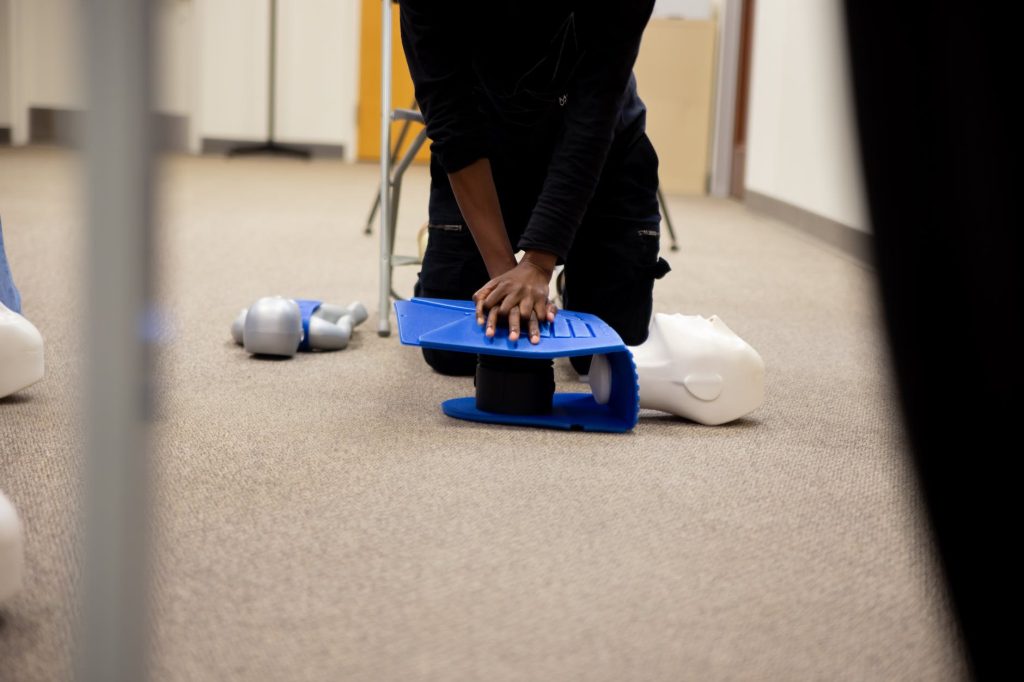What is online CPR certification and how does it differ from traditional in-person training?
Cardiac arrest can strike anyone, anywhere, at any time. Knowing CPR (cardiopulmonary resuscitation) can mean the difference between life and death for someone in need. Traditional in-person CPR training has been around for years, but with the rise of online education, online CPR certification is now a popular alternative. So, what is online CPR certification, and how does it differ from traditional in-person training? In this blog post, we’ll explore the ins and outs of online CPR certification, its benefits and drawbacks, and how it compares to traditional in-person training. Whether you’re a healthcare professional or a concerned citizen looking to learn CPR, read on to find out which training option might be best for you.
Defining Online CPR
Online CPR certification is a type of training that allows individuals to learn and practice CPR (cardiopulmonary resuscitation) techniques through an online course rather than attending an in-person training session. The course is typically self-paced, and students can access it from anywhere with an internet connection.
In contrast, traditional in-person CPR training typically involves attending a classroom-based course, where students are taught by an instructor and have the opportunity to practice CPR techniques on a manikin or other simulated patient. In-person training may also include group activities, hands-on practice, and personalized feedback from the instructor.
The Differences
One of the main differences between online CPR certification and in-person training is the level of hands-on experience. In-person training provides more opportunities for students to practice and receive feedback on their CPR technique, while online courses may rely more heavily on videos and simulations. Additionally, in-person training may provide a more interactive and collaborative learning environment, with opportunities for group activities and discussion.
Another difference between the two approaches is the flexibility and convenience of online training. Online courses can typically be completed at the student’s own pace and on their own schedule, which may be more convenient for individuals with busy schedules or limited access to in-person training. In-person training, on the other hand, may be more structured and require a specific time commitment, which may be less flexible for some individuals.
Overall, both online CPR certification and in-person training have their benefits and drawbacks, and individuals should consider their own learning style, schedule, and needs when selecting a training option.
Drawbacks
There are several common concerns about online CPR certification, including the perception that it may be less effective than in-person training and the lack of hands-on experience. Some individuals may question the validity of online CPR certification and wonder whether they will be adequately prepared to perform CPR in an emergency situation. Others may be concerned that they will not have the opportunity to practice hands-on techniques, which they feel is an essential component of learning CPR. Additionally, some may worry that the online format may not provide sufficient feedback or support from instructors. However, many online CPR certification programs are designed to address these concerns and offer interactive simulations, assessments, and personalized feedback to ensure that students are well-prepared to perform CPR when the need arises. Ultimately, it is important to carefully evaluate the quality and reputation of any online CPR certification program and choose one that offers comprehensive training and support.
The benefits of online CPR certification

Online CPR certification has become an increasingly popular option for individuals looking to learn CPR (cardiopulmonary resuscitation) skills. Here are some of the benefits of online CPR certification and why it may be worth considering over traditional in-person training:
- Convenience and flexibility: One of the main advantages of online CPR certification is the ability to complete the course at your own pace and on your own schedule. This can be especially beneficial for individuals with busy schedules or limited access to in-person training, such as those who live in rural areas.
- Cost-effective: Online CPR certification courses are often more affordable than traditional in-person training, which can be a deciding factor for individuals who are on a tight budget.
- Self-paced learning: Online courses provide a self-paced learning environment that allows students to work at their own speed, take breaks when needed, and revisit specific topics as many times as necessary to fully understand the material.
- Interactive and engaging: Many online CPR certification courses use interactive simulations, animations, and videos to engage students and provide a more immersive learning experience.
- Accessible: Online CPR certification is accessible to a wide range of individuals, including those with disabilities or other special needs. Online courses can be modified to accommodate different learning styles and abilities.
It’s important to note that while online CPR certification offers many benefits, it may not be the best option for everyone. In-person training may be more appropriate for individuals who require hands-on practice and personalized feedback, such as healthcare professionals or those who work in high-risk environments. Ultimately, the decision to pursue online CPR certification or in-person training will depend on your individual needs and preferences.
Understanding course content and structure
Online CPR certification courses are designed to provide students with the knowledge and skills necessary to perform CPR (cardiopulmonary resuscitation) on someone in need. The courses are typically self-paced, and students can complete them on their own schedule from any location with internet access.
The course content for online CPR certification typically includes the following:
- Basic anatomy and physiology: Students learn about the structure and function of the heart and lungs, as well as the circulatory system.
- CPR techniques: Students learn how to perform chest compressions, rescue breaths, and other essential CPR techniques.
- Automated external defibrillator (AED) training: Students learn how to use an AED to restore a normal heart rhythm in the event of sudden cardiac arrest.
- Choking relief: Students learn how to recognize and respond to choking emergencies in adults, children, and infants.
- Legal and ethical considerations: Students learn about the legal and ethical issues surrounding CPR, including Good Samaritan laws and liability.
In terms of structure, online CPR certification courses typically consist of a series of modules or lessons that include video presentations, interactive simulations, quizzes, and assessments. Students can progress through the course at their own pace, and many courses offer the option to revisit specific modules or topics for additional review.
In contrast, traditional in-person CPR training may include more hands-on practice and personalized feedback from an instructor. In-person training typically involves attending a classroom-based course, where students are taught by an instructor and have the opportunity to practice CPR techniques on a manikin or other simulated patient. In-person training may also include group activities, hands-on practice, and personalized feedback from the instructor.
While online CPR certification may not provide the same level of hands-on experience as in-person training, it can be a convenient and cost-effective way to learn essential CPR skills.
Closing
Online CPR certification has become a popular option for those looking to learn the essential skills necessary to save lives. Through self-paced modules, students can learn about basic anatomy and physiology, CPR techniques, AED training, choking relief, and legal and ethical considerations. While online certification may not offer the same level of hands-on practice as traditional in-person training, it can be a convenient and cost-effective way to learn these essential skills. Ultimately, the choice between in-person and online training will depend on individual preferences and circumstances. Whether you choose in-person or online training, the most important thing is to learn the life-saving techniques of CPR and be prepared to use them in an emergency situation.



